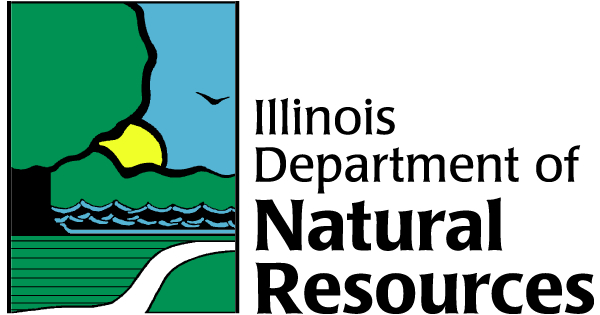Black Soil Prairie
Characteristics
The different prairie types are the result of variations in soil moisture, soil composition, geological substrate, glacial history and topography. Black soil prairie was once the most abundant prairie type in what is now Illinois. Now it is among the rarest. The deep, loess soil of this land was left by the glaciers that covered most of central and northern Illinois. The flat landscape seen over most of the northern two-thirds of the state is where this prairie grew. Poor natural drainage in the black soil prairie resulted in wet conditions during part of the year. Also known as tall-grass prairie or Grand Prairie, the dark-colored, fertile soils found here were formed by the decomposition of vegetation, mostly prairie grasses and wildflowers.
What Lives Here?
Because the prairie ecosystem is recently evolved, few prairie species are restricted to the prairie habitat and may be found in other habitats as well. Plants tend to be more characteristic of specific prairie habitats than animals. Plants growing on the black soil prairie include big bluestem, Indian grass, white false indigo, prairie dock, compass-plant, cup-plant, Culver’s-root, little bluestem, black-eyed Susan, sky-blue aster, prairie phlox, nodding onion, rattlesnake master, prairie gentian and many other species. Henslow’s sparrow, Virginia rail, least bittern, northern harrier and upland sandpiper are birds that may be present in this prairie. The American badger, thirteen-lined ground squirrel and Franklin’s ground squirrel are typical prairie mammals.
Recreation
hiking, wildlife observation, photography
Where is it Found?
Black soil prairie was once found in north central, central and south central Illinois. Today it is the rarest prairie type in the state. Most of this productive soil was converted to agricultural uses, and some has been taken over for urban development. The remaining high quality prairies in Illinois, less than 0.01 percent of the original prairies, are found in very small patches. Eighty-three percent of the remaining high quality prairies are smaller than 10 acres in composition, while 30 percent of these areas are less than one acre in size. Approximately 2,800 acres (both good and poor quality) of black soil prairies remain in Illinois. Below you will find a list of some black soil prairies still found in Illinois. For many of these prairies, you will need to call in advance to make arrangements before visiting the site.
Brookville Lutheran Cemetery Prairie Nature Preserve near Brookville in Carroll County; Goose Lake Prairie State Natural Area and Goose Lake Prairie Nature Preserve near Morris in Grundy County (largest black soil prairie remnant remaining in Illinois); Grant Creek Prairie Nature Preserve near Wilmington in Will County; Greenlee Cemetery Prairie Nature Preserve near Cambridge in Henry County; Loda Cemetery Prairie Nature Preserve near Loda in Iroquois County; McDonald Woods Forest Preserve near Libertyville in Lake County; Meadowbrook Park near Urbana in Champaign County; Midewin National Tallgrass Prairie near Wilmington in Will County; Morton Grove Prairie Nature Preserve near Morton Grove in Cook County; Munson Township Cemetery Prairie Nature Preserve near Cam-bridge in Henry County; Nachusa Grassland near Franklin Grove in Lee County; Prospect Cemetery Prairie Nature Preserve near Paxton in Ford County; Searls Park Prairie Nature Preserve in Rockford in Winnebago County; Sunbury Railroad Prairie Nature Preserve near Dwight in Livingston County; Weston Cemetery Prairie near Weston in McLean County; Wolf Road Prairie Nature Preserve near Westchester in Cook County


